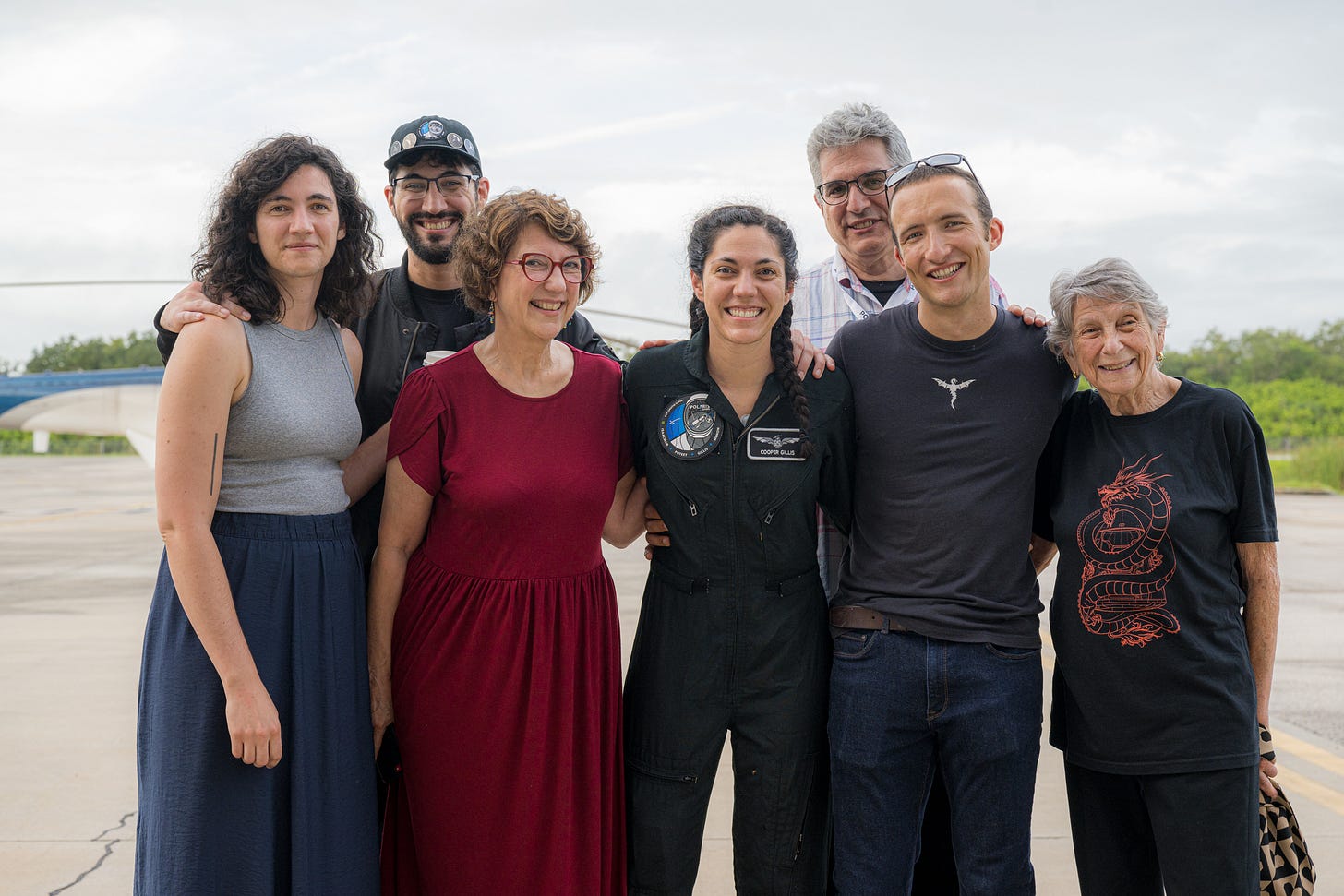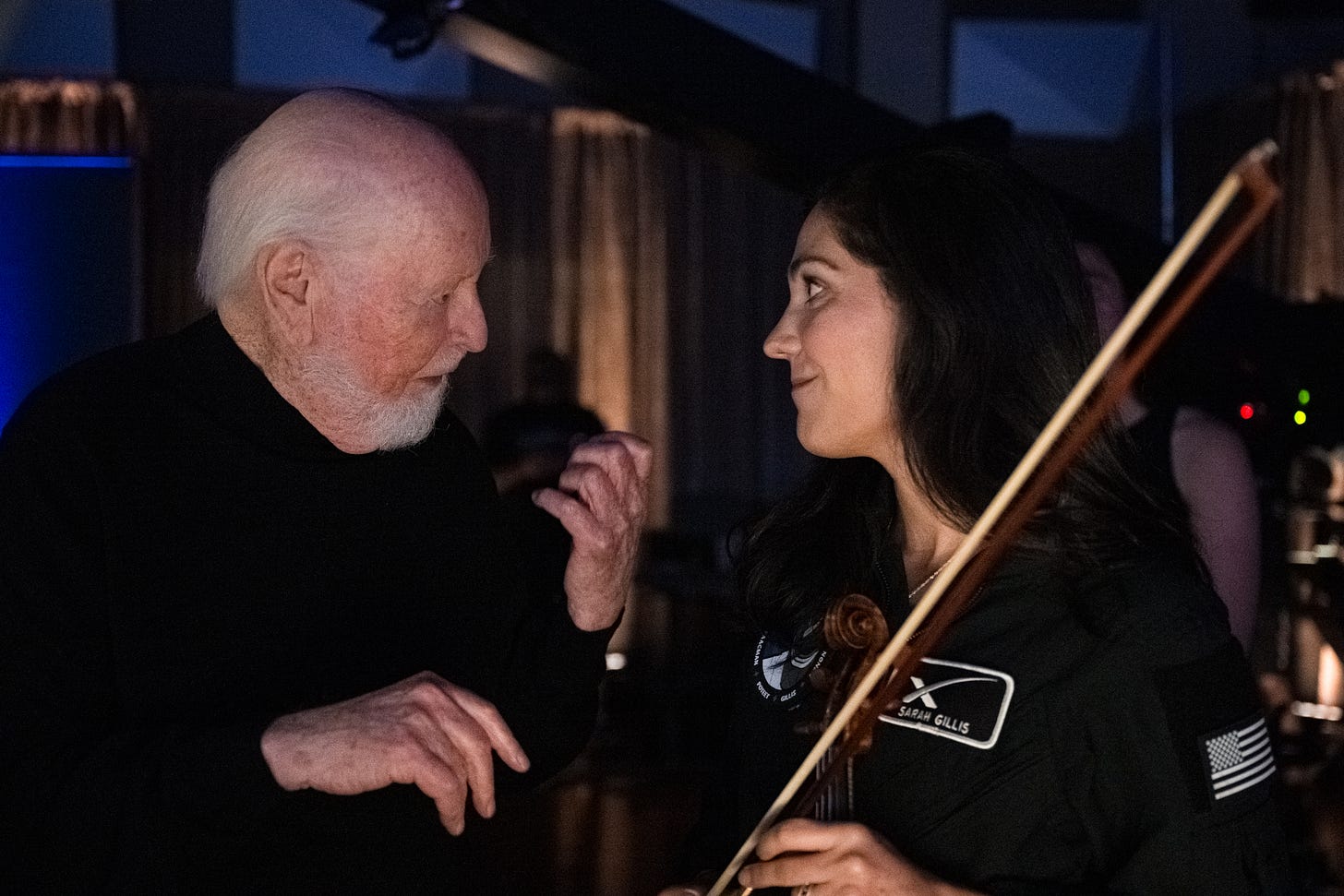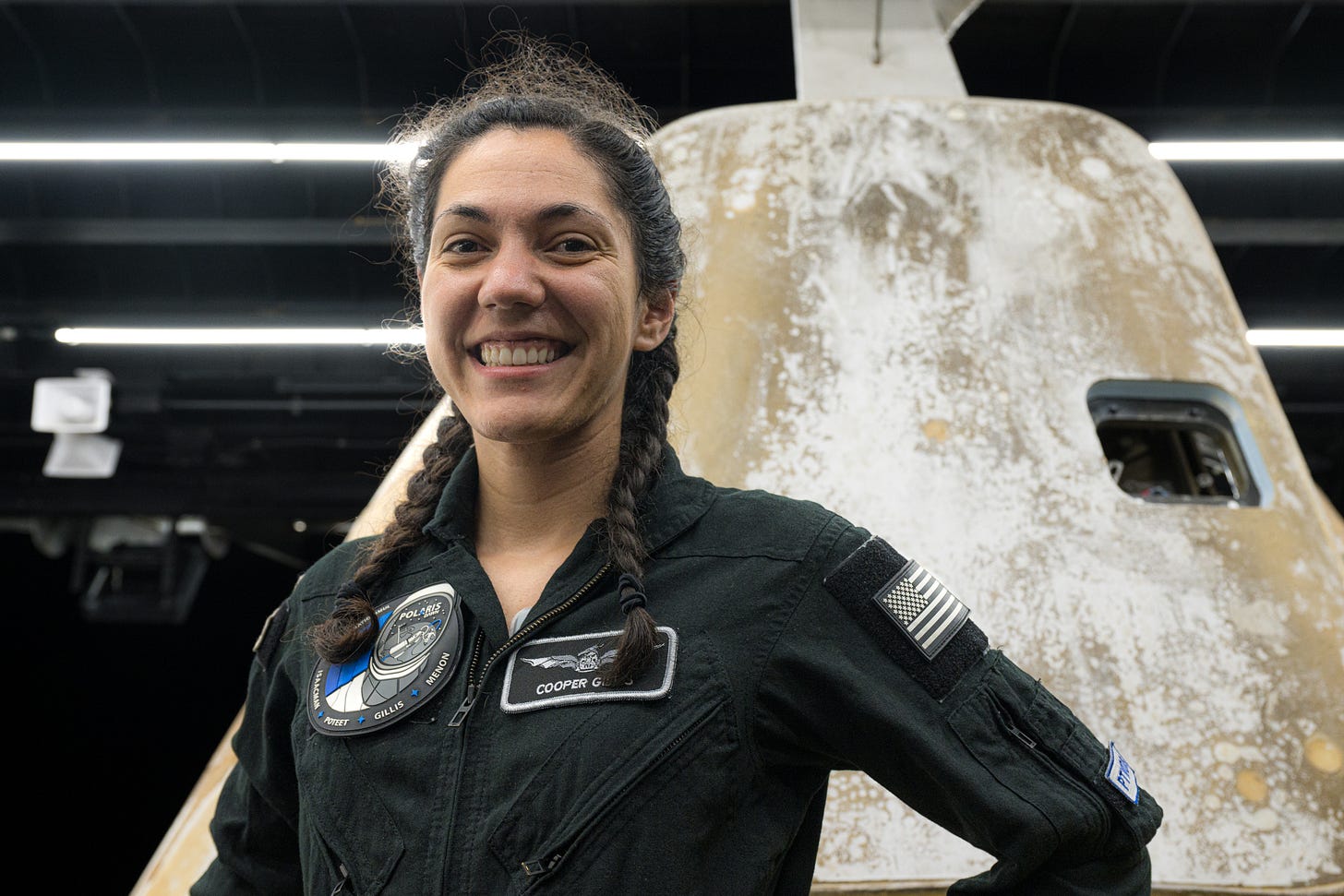In case you missed Sarah Gillis’ awe-inspiring performance of “Rey's Theme” from Star Wars: The Force Awakens on the Polaris Dawn mission, we invite you to watch the video below. Then just listen a second time through as you read how this masterful performance was fueled by personal passion, overcame unique technical challenges, and resulted in the most innovative musical collaboration between Earth and space to date.
Sarah Gillis, a mission specialist on the historic Polaris Dawn mission, is both a musician and an astronaut. A classically trained violinist, she has spent years pursuing her love for music alongside her passion for space exploration. This groundbreaking production captures the intersection of those two worlds, as Gillis becomes the first person to play a violin in space.
*The music starts about 55 seconds into video following an intro.
From Musician to Engineer and Astronaut
Gillis first learned to play the violin under the guidance of her mother, who was a music teacher. Growing up in Boulder, Colorado, Gillis began her violin training at a young age and quickly developed a passion for music. She attended the Shining Mountain Waldorf School, where music was a significant part of the curriculum, providing her with a strong foundation in classical music. With her mother's encouragement and formal lessons, Gillis participated in youth orchestras and performances. Her early exposure to music, coupled with her mother’s influence, motivated her to pursue violin as a central part of her childhood.

In high school, Gillis discovered her love for space and engineering, leading her to pursue a degree in Aerospace Engineering at the University of Colorado Boulder. Her technical skills and passion for space exploration eventually landed her a role at SpaceX, where she worked on astronaut training programs for NASA’s commercial crew flights. Meanwhile Gillis continued to play violin in her free time.
This unique blend of musical talent and technical expertise ultimately set the stage for her performance in space.
Challenges of Playing the Violin in Space
The Polaris Dawn mission is the first of three SpaceX Polaris missions aimed at advancing private space exploration. As a mission specialist, Sarah Gillis contributed to scientific research, tested space technology, and participated in the first-ever commercial spacewalk, becoming the first civilian woman to do so. Alongside colleague Anna Menon, Gillis also set a record for the highest altitude reached by a female astronaut, civilian or space agency. Her violin performance in space marked another groundbreaking achievement, though it came with its own set of challenges.
In an interview with SpaceX’s mission update team, Gillis reflected on the difficulties of performing in a microgravity environment. “In space, everything floats, so controlling the violin and bow required a lot more focus and careful movement than on Earth,” she explained. “The lack of gravity affects not only your posture but also the pressure you apply with the bow on the strings, which changes the sound.”
The absence of gravity required Gillis to adjust her playing style. Before the mission, she used simulators to mimic weightlessness and practiced managing delicate bowing without gravity. During the mission, she refined techniques to keep her bow steady, apply pressure, and prevent the violin from drifting. Applying the discipline she learned early in her life proved invaluable.
How the Video Was Made: A Global Collaboration
The production was a global collaboration that spanned continents—and space. Bringing this performance to life involved the coordinated efforts of SpaceX, the Polaris Program, and multiple orchestras from around the world. Months of planning and careful logistics were required for the technical setup aboard the SpaceX Dragon capsule and the synchronized orchestral parts recorded on Earth.
Gillis was joined on Earth by student musicians from the El Sistema, which provides free, high-quality music education to underserved youth, fostering social change and development. Their performances were recorded in advance, with each orchestra following detailed guidance to match the specific tempo and dynamics of Gillis’ solo in space.
Participating El Sistema orchestras were The Boston String Academy in the United States, El Sistema in Venezuela, NEOJIBA in Brazil, Dream Orchestra in Sweden, Brass for Africa in Uganda, and BLUME Haiti.
The orchestral coordination was overseen by Michael Giacchino, a renowned American composer and conductor known for his work on film scores for blockbusters like Star Wars, Jurassic World, and Up, for which he won an Academy Award. Giacchino’s work on the Star Wars films made him an ideal choice to lead this collaboration, particularly since "Rey’s Theme" was a central piece.
Giacchino shared his excitement about the project in an interview with SpaceX's media team after the performance, stating, "This was one of the most unique and inspiring projects I’ve ever been part of. Watching Sarah perform from space and knowing that orchestras on Earth were playing alongside her was a powerful reminder of how art can connect us across any distance, even between planets. It really brings out the best in human creativity and cooperation."
Once the orchestral segments were completed, the recordings were sent back to the production team at SpaceX for synchronization with Gillis’ solo.
"Rey's Theme", Inspiration and Parallels
"Rey’s Theme," composed by John Williams for Star Wars: The Force Awakens, was not chosen at random. The piece resonates deeply with Gillis, who sees parallels between her own life and the journey of Rey, the central character in the new Star Wars trilogy.
Rey’s story is one of self-discovery, overcoming obstacles, and embracing her destiny. Gillis has spoken about how much she relates to these themes, having transitioned from a musician to an aerospace engineer, then to an astronaut. Like Rey, she has had to navigate new challenges and embrace unfamiliar roles.
In an interview with SpaceX’s media team, Gillis explained, “Rey’s journey of finding her place and purpose really mirrors my own. It’s about pushing boundaries, taking on challenges, and realizing the potential you didn’t know you had. I felt deeply connected to her story, and performing her theme in space was my way of expressing that connection.”










